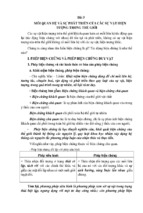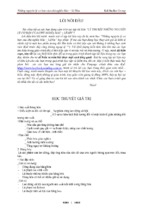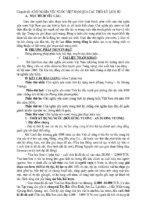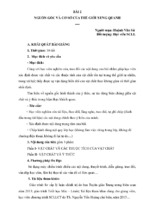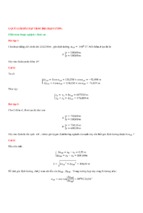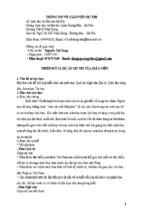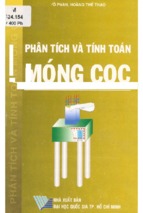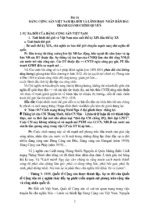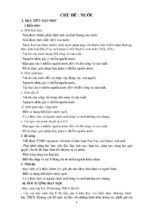d from ascelibrary.org by RMIT UNIVERSITY LIBRARY on 01/04/19. Copyright ASCE. For personal use only; all right
Airfield and Highway
Pavements 2017
Airfield Pavement
Technology and Safety
Selected Papers from the Proceedings of the
International Conference on Highway Pavements
and Airfield Technology 2017
Edited by
Imad L. Al-Qadi, Ph.D., P.E.
Hasan Ozer, Ph.D.
Eileen M. Vélez-Vega, P.E.
Scott Murrell, P.E.
Downloaded from ascelibrary.org by RMIT UNIVERSITY LIBRARY on 01/04/19. Copyright ASCE. For personal use only; all rights reserved.
AIRFIELD AND HIGHWAY
PAVEMENTS 2017
AIRFIELD PAVEMENT TECHNOLOGY
AND SAFETY
PROCEEDINGS OF THE INTERNATIONAL CONFERENCE ON
HIGHWAY PAVEMENTS AND AIRFIELD TECHNOLOGY 2017
August 27–30, 2017
Philadelphia, Pennsylvania
SPONSORED BY
The Transportation & Development Institute
of the American Society of Civil Engineers
EDITED BY
Imad L. Al-Qadi, Ph.D., P.E.
Hasan Ozer, Ph.D.
Eileen M. Vélez-Vega, P.E.
Scott Murrell, P.E.
Published by the American Society of Civil Engineers
Downloaded from ascelibrary.org by RMIT UNIVERSITY LIBRARY on 01/04/19. Copyright ASCE. For personal use only; all rights reserved.
Published by American Society of Civil Engineers
1801 Alexander Bell Drive
Reston, Virginia, 20191-4382
www.asce.org/publications | ascelibrary.org
Any statements expressed in these materials are those of the individual authors and do not
necessarily represent the views of ASCE, which takes no responsibility for any statement
made herein. No reference made in this publication to any specific method, product, process,
or service constitutes or implies an endorsement, recommendation, or warranty thereof by
ASCE. The materials are for general information only and do not represent a standard of
ASCE, nor are they intended as a reference in purchase specifications, contracts, regulations,
statutes, or any other legal document. ASCE makes no representation or warranty of any
kind, whether express or implied, concerning the accuracy, completeness, suitability, or
utility of any information, apparatus, product, or process discussed in this publication, and
assumes no liability therefor. The information contained in these materials should not be used
without first securing competent advice with respect to its suitability for any general or
specific application. Anyone utilizing such information assumes all liability arising from such
use, including but not limited to infringement of any patent or patents.
ASCE and American Society of Civil Engineers—Registered in U.S. Patent and Trademark
Office.
Photocopies and permissions. Permission to photocopy or reproduce material from ASCE
publications can be requested by sending an e-mail to
[email protected] or by locating a
title in ASCE's Civil Engineering Database (http://cedb.asce.org) or ASCE Library
(http://ascelibrary.org) and using the “Permissions” link.
Errata: Errata, if any, can be found at https://doi.org/10.1061/9780784480953
Copyright © 2017 by the American Society of Civil Engineers.
All Rights Reserved.
ISBN 978-0-7844-8095-3 (PDF)
Manufactured in the United States of America.
Airfield and Highway Pavements 2017
iii
Downloaded from ascelibrary.org by RMIT UNIVERSITY LIBRARY on 01/04/19. Copyright ASCE. For personal use only; all rights reserved.
Preface
An ever-growing number of highway and airport agencies, companies, organizations, institutes, and
governing bodies are embracing principles of sustainability in managing their activities and
conducting business. Overarching goals emphasize key environmental, social, economic, and safety
factors in the decision-making process for every pavement project. Therefore, the theme of the
conference was chosen as “Sustainable Pavements and Safe Airports.” It is dedicated to the state-ofthe-art and state-of-practice areas durability, cost-effective, and sustainable airfield and highway
pavements. In addition, recent advancements and technologies to ensure safe and efficient airport
operations are included.
This international conference provides a chance to interact and exchange information with worldwide
leaders in the fields of highway and airport pavements, as well as airport safety technologies. This
conference brought together researchers in transportation and airport safety technologies, designers,
project/construction managers, academics, and contractors from around the world to discuss design,
implementation, construction, rehabilitation alternatives, and instrumentation and sensing.
The proceedings of 2017 International Conference on Highway Pavements and Airfield Technology
have been organized in four (4) publications as follows:
Airfield and Highway Pavements 2017: Design, Construction, Evaluation, and
Management of Pavements
This volume includes papers in the areas of mechanistic-empirical design methods and
advanced modeling techniques for design of conventional and permeable pavements,
construction specifications and quality, accelerated pavement testing, pavement condition
evaluation, and network level management of pavements.
Airfield and Highway Pavements 2017: Testing and Characterization of Bound and
Unbound Pavement Materials
This volume includes papers in the areas of laboratory and field characterization of asphalt
binders, asphalt mixtures, base/subgrade materials, and recent advances in concrete pavement
technology. This volume also features papers for the use of recycled materials, in-place
recycling techniques and unbound layer stabilization methods.
Airfield and Highway Pavements 2017: Pavement Innovation and Sustainability
This volume is dedicated to the papers featuring most recent technologies used for structural
health monitoring of highway pavements, intelligent compaction, and innovative
technologies used in the design and construction of highway pavements. The volume also
includes papers in the area of sustainability assessment using life-cycle assessment of
highway and airfield pavements and climate change impacts and preparation for pavement
infrastructure.
© ASCE
Airfield and Highway Pavements 2017
Downloaded from ascelibrary.org by RMIT UNIVERSITY LIBRARY on 01/04/19. Copyright ASCE. For personal use only; all rights reserved.
Airfield and Highway Pavements 2017: Airfield Pavement Technology and Safety
This volume is dedicated to recent advances in the area of airfield pavement design
technology and specifications, modeling of airfield pavements, use of accelerated loading
systems for airfield pavements, and airfield pavement condition evaluation and asset
management.
The papers in these proceedings are the result of peer reviews by a scientific committee of more than
90 international pavement and airport technology experts, with three to five reviewers per paper.
Recent research was presented in the technical podium and poster sessions including the results from
current Federal Aviation Administration (FAA) airport design, specifications, and safety
technologies; design and construction of highway pavements; pavement materials characterization
and modeling; pavement management systems; and innovative technologies and sustainability. The
plenary sessions featured the Francis Turner Lecture by Dr. Robert Lytton and the Carl Monismith
Lecture by Dr. David Anderson. In addition, two technical tours were offered: Philadelphia
International Airport and the Center for Research and Education in Advanced Transportation
Engineering Systems (CREATEs) Lab of the Henry M. Rowan College of Engineering at Rowan
University.
Three workshops were presented prior to the conference: hands-on FAA’s FAARFIELD software,
design and construction of permeable pavements, and environmental product declarations.
The editors would like to thank the members of the scientific committee who volunteered their time
to review the submitted papers and offered constructive critiques to the authors. We are also grateful
for the work of the steering committee members in planning and organizing the conference: Katie
Chou, Jeffrey Gagnon, John Harvey, Brian McKeehan, Shiraz Tayabji, and Geoffrey Rowe; as well
as the local organizing committee chaired by Geoffrey Rowe and members including James A.
McKelvey, Timothy Ward, Ahmed Faheem, and Yusuf Mehta for their help with the technical tours.
Finally, we would like to especially thank the ASCE T&DI staff who helped put the conference
together: Muhammad Amer, Mark Gable, Drew Caracciolo, and Deborah Denney.
Imad L. Al-Qadi, Ph.D., P.E., Dist. M.ASCE, University of Illinois at Urbana-Champaign
Hasan Ozer, Ph.D., M.ASCE, University of Illinois at Urbana-Champaign
Eileen M. Vélez-Vega, P.E., M.ASCE, Kimley-Horn Puerto Rico, LLC
Scott D. Murrell, P.E., M.ASCE, Applied Research Associates
© ASCE
iv
Airfield and Highway Pavements 2017
v
Contents
Downloaded from ascelibrary.org by RMIT UNIVERSITY LIBRARY on 01/04/19. Copyright ASCE. For personal use only; all rights reserved.
Airport Design Specification and Materials
Towards a Performance-Based Airport Asphalt Specification .............................. 1
Greg White
Incorporation of Reliability into Airport Pavement Design Using
Backcalculated Pavement Layer Moduli ................................................................ 15
Richard Ji, Zilong Wang, and Nassim Sabahfar
Providing a Durable Airfield Concrete Specification at Kansas City
International .............................................................................................................. 27
Christopher S. Decker, Jason Fuehne, and Gary L. Mitchell
Advanced Statistical Learning and Prediction of Complex Runway
Incursion .................................................................................................................... 38
I. Song, I. Cho, T. Tessitore, T. Gurcsik, and H. Ceylan
Advanced Modeling and Analysis of Airfield Pavements
Alternative Approaches to Determining Robust ANN Based Models for
Predicting Critical Airport Rigid Pavement Responses........................................ 51
Orhan Kaya, Adel Rezaei-Tarahomi, Kasthurirangan Gopalakrishnan,
Halil Ceylan, Sunghwan Kim, and David R. Brill
Investigation of Deformation Trends Observed in Pavement Test Section
Unbound Aggregate Layers Due to Heavy Aircraft Loading with Wander ....... 61
Priyanka Sarker and Erol Tutumluer
Modeling Interface Debonding between Asphalt Layers under
Dynamic Aircraft Loading ....................................................................................... 71
Seyed-Farzan Kazemi, Adam J. T. Hand, Elie Y. Hajj, Peter E. Sebaaly,
and Raj V. Siddharthan
Airfield Pavement Design
Evaluation of Airfield Pavements Using FAARFIELD ........................................ 82
Andreas Loizos, Angeliki Armeni, and Christina Plati
© ASCE
Airfield and Highway Pavements 2017
Advances in FAA Pavement Thickness Design Software:
FAARFIELD 1.41 ..................................................................................................... 92
D. R. Brill and I. Kawa
Case Studies of Airfield Construction Projects
Downloaded from ascelibrary.org by RMIT UNIVERSITY LIBRARY on 01/04/19. Copyright ASCE. For personal use only; all rights reserved.
A Case Study: Keel Section Reconstruction of Runway 08L-26R the
29 Day Wonder at Hartsfield-Jackson Atlanta International Airport .............. 103
Vissu Dokka, Roy Keck, Quintin B. Watkins, Norma Click,
and Subash Kuchikulla
Airfield Pavement Accelerated Loading Testing
Sensitivity Analysis of Rut Depth to Longitudinal Measurement
Location in Accelerated Pavement Testing with a Heavy Vehicle
Simulator-Airfield................................................................................................... 115
T. A. Parsons, H. Kazmee, and N. Garg
Concrete Pavement Overload Test at the FAA’s National Airport
Pavement Test Facility ........................................................................................... 127
H. Yin and D. R. Brill
Behavior of P-401 HMA Surface in Accelerated Pavement Testing at
High Temperatures and Tire Pressures ............................................................... 152
Navneet Garg, Hasan Kazmee, and Russell Knieriem
Review of a Procedure for Calibrating Unbound Layer Rutting Model in
Flexible Airfield Pavements Using Accelerated Pavement Testing Data .......... 163
Rongzong Wu, John Harvey, Qi Ren, Navneet Garg, and Davis Jones
Airfield Pavement Monitoring, Evaluation, and Nondestructive Testing
A Comparison of Subgrade Improvement Methods ........................................... 173
Tim Ward, Ania Taylor, and Joe Grubbs
Rutting Performance of Cold-Applied Asphalt Repair Materials for
Airfield Pavements.................................................................................................. 185
John F. Rushing, Ben C. Cox, and Webster C. Floyd
Construction, Instrumentation, and Performance of a Double Sized Slab
Designed for Airport Runways .............................................................................. 196
M. T. McNerney, J. Kim, and E. P. Bescher
Evaluation of HWD Backcalculation Tools and Methodologies Using FAA
National Airport Pavement Test Facility’s Data ................................................. 207
A. Ashtiani, H. Shirazi, S. Murrell, and R. Speir
© ASCE
vi
Airfield and Highway Pavements 2017
Evaluation of Flexible Pavement Using HWD and PSPA at National
Airport Pavement and Materials Research Center (NAPMRC) ....................... 218
Qiang Li and Navneet Garg
Airfield Pavement Asset Management
Downloaded from ascelibrary.org by RMIT UNIVERSITY LIBRARY on 01/04/19. Copyright ASCE. For personal use only; all rights reserved.
Characterization of Pavement Condition Index Deterioration Curve
Shape for USAF Airfield Pavements..................................................................... 230
T. A. Parsons and B. A. Pullen
Airfield and Highway Sustainability Practices and Assessment
Airfield Pavement Life Cycle Assessment Framework and Guidelines ............ 241
A. A. Butt, D. Reger, J. T. Harvey, and N. Garg
© ASCE
vii
Airfield and Highway Pavements 2017
1
Towards a Performance-Based Airport Asphalt Specification
Greg White, Ph.D.1
1
Downloaded from ascelibrary.org by RMIT UNIVERSITY LIBRARY on 01/04/19. Copyright ASCE. For personal use only; all rights reserved.
Adjunct Associate Professor, Univ. of the Sunshine Coast, Sippy Downs, Queensland,
Australia. E-mail:
[email protected]
Abstract
Prescriptive or recipe-based specification of asphalt surface mixture design, production and
construction is normal within the airport industry. However, reports of distress in generally compliant
airport asphalt has eroded confidence in this traditional approach. As a result, there is increased
interest in performance-based airport asphalt specification. This aims to allow innovation for risk
reduction and to make asphalt producers more contractually responsible for the performance of their
airport asphalt surfaces. Where performance-indicative test methods are available for the evaluation
of airport asphalt performance requirements, performance-based testing is appropriate. However,
where no such performance test exists, the traditional prescriptive requirements must be retained. A
combination of prescriptive and performance-based specification requirements is appropriate. Future
work is expected to focus on developing additional performance-indicative test methods where they
do not currently exist.
Introduction
Since the 1950s, a prescriptive or recipe-based approach has generally been adopted for the
specification and design of airport asphalt surfaces (White 2016f). The prescriptive specification is
usually based on the Marshall-design method adapted for airport surfaces by the US Army Corps of
Engineers (the Corps) in the 1940s and 1950s (White 1985). Many airports and aviation authorities
retain the basis of the Corps methods in current airport asphalt design, specification and construction
practice (White 2016f). Importantly, grooves are generally sawn transversely in runway surfaces to
promote aircraft skid resistance (Zuzelo 2014). As a consequence, the traditional airport surface
asphalt is often described as ‘grooved, dense graded, Marshall-asphalt’. Although grooved Marshallasphalt is common for airport surfacing, some jurisdictions prefer alternate asphalt mixtures, which
are discussed later.
Generally, airport pavements are resurfaced when the condition of the asphalt presents an
unacceptable risk to safe aircraft operations. Many airports traditionally planned on resurfacing
flexible airport pavements on a fifteen-year cycle. Some of these airports have now reduced that
expectation to resurfacing every ten years. Concerningly, a number of airports have also experienced
surface distress requiring partial or full resurfacing within six years of surface construction (White &
Embleton 2015; White 2016f). This has resulted in reduced confidence in the traditional prescriptive
airport asphalt specification to provide reliable surface performance under modern aircraft loadings.
The reduction of confidence in the traditional prescriptive specification has prompted interest in
a performance-based approach to airport asphalt specification. The aim is to allow asphalt producers
to innovate for risk reduction and to make asphalt producers contractually responsible for the
performance of airport asphalt surfaces. This paper outlines the basis and approach for the
implementation of a performance-based asphalt specification for airports. The focus is on Australian
experience, but international issues are incorporated where appropriate. However, the issues and
concepts apply to many airports around the world where a performance-based specification is of
interest.
© ASCE
Airfield and Highway Pavements 2017
2
Background
Airport surface requirements
Downloaded from ascelibrary.org by RMIT UNIVERSITY LIBRARY on 01/04/19. Copyright ASCE. For personal use only; all rights reserved.
As described below, the modes of distress requiring earlier than expected airport pavement
resurfacing are generally linked to inadequate asphalt mixture resistance to either fracture and
deformation (White 2016f). Durability is also important and includes both resistance to moisture
damage (stripping) and resistance to the generation of loose stones (ravelling) that damage aircraft.
Surface friction for aircraft skid resistance is also critical to aircraft safety, and asphalt surface texture
is essential, particularly when grooving is not provided (Table 1).
Table 1. Summary of airport asphalt performance requirements (White 2016f)
Physical requirement
Deformation resistance
Fracture resistance
Surface friction and texture
Durability
Protects against
Groove closure
Rutting
Shearing/shoving
Top down cracking
Fatigue cracking
Skid resistance
Compliance requirement
Pavement generated FOD
Resistance to moisture damage
Level of importance
High
Moderate
High
Moderate
Surface deformation
Asphalt surface deformation has been reported at airports. Some Australasian examples include
rutting at Cairns (Australia), Perth (Australia), Kuala Lumpur (Malaysia), Doha (Qatar) and Dubai
(UAE) airports (Rodway 2009). Taxiways at San Francisco (USA) airport also rutted during hot
weather, under slow moving and sharp turning B747 aircraft (Monismith et al. 2000). At San
Francisco it was concluded that a more viscous bitumen was required to improve the shear strength of
the asphalt mixture.
Surface shearing has also been reported. Mooren et al. (2014) investigated surface tearing
under aircraft turning at Amsterdam airport (Netherlands). A lack of mixture cohesion at elevated
temperature, due to softening of the bitumen, was found to result in inadequate shear strength in the
surface. Similarly, an Australian airport was reported to experience unusual softness during summer
months (Emery 2005). It was concluded that the binder had a high temperature susceptibility
although a reduction in softness was observed after three years. A similar case of surface tenderness
was reported at another Australian airport, also linked to bitumen (White 2014). Moreover, Newark
airport, in New Jersey (USA) experienced similar asphalt shearing in the heavy aircraft braking zone
associated with aircraft landings (Bognacki et al. 2007).
Groove closure is one of the most commonly reported airport asphalt surface distresses,
particularly in hot countries like Australia (Rodway 2016). Groove closure most commonly occurs
where aircraft move slowly and in a direction parallel to the alignment of the grooves, such as
entering a runway from a perpendicular taxiway (White & Rodway 2014). Groove closure has been
reported at numerous airports in Australia, usually occurring within the first three years and most
often during extended periods of unusually hot weather (Emery 2005).
The two ends (approximately 800 m long each) of the main runway at Brisbane airport
(Australia) were resurfaced in 2013. Grooving was performed over the full length and width of the
new asphalt six weeks following construction. During a week of unusually hot weather in the
following summer, significant groove closure was observed, particularly at the intersection of the
dominant departure taxiway and the main runway (White & Rodway 2014). Melbourne and Perth
airports (Australia) also experienced significant groove closure in runways and taxiways (White
2016f).
Groove closure was reported at the new Hong Kong airport despite trafficking being delayed
for 12 months after its construction (White & Rodway 2014). Similarly, the runway at the new airport
at Delhi (India) was intended to be grooved following its construction in 2008. In order to confirm
that the grooves would not close, a test section of grooving was constructed across the runway and
© ASCE
Airfield and Highway Pavements 2017
trafficked by a heavy pneumatic tyred roller. The grooves closed, even under the relatively low roller
load. As a result, grooving was deferred until a similar test confirmed the ability for the asphalt to
resistant groove closure. However, as at March 2014 the surface remained un-grooved (White &
Rodway 2014).
Surface fracture
Downloaded from ascelibrary.org by RMIT UNIVERSITY LIBRARY on 01/04/19. Copyright ASCE. For personal use only; all rights reserved.
Conventional fatigue cracking is not generally an issue for airport pavements (Rodway 2016). This
reflects the relatively low number of load repetitions and the relatively high stiffness of the pavement
structure compared to roads. However, top down cracking, resulting from high shear and tensile
stresses at the surface of the pavement is now a recognised distress mode for all pavement types
(Collop & Roque 2004). Australian airports have experienced significant top down cracking, likely
associated with chemical hardening of acid modified bitumen (White 2016e). In one severe case,
loose material was generated from interconnected surface cracks and required surface full
replacement after just five years.
Factors affecting airport surface distress
The increase in observed airport asphalt distress indicates a reduction in the factor of safety
associated with the traditional prescriptive airport asphalt specification. Natural variability of
materials, environment and construction combine to increase the risk of surface distress. The reduced
factor of safety reflects increased shear stresses imparted by modern aircraft, in combination with less
stress-resistant asphalt mixtures (White 2016b).
Particularly since WWII, aircraft wheel loads and tyre pressures have increased significantly
(Roginski 2007; Fabre et al. 2009). This trend is expected to continue in the future as aircraft
manufacturers strive for ever greater fuel efficiency (Rodway 2016). The result is higher shear
stresses in asphalt surface layers, even when wheel spacings have been increased to protect the
subgrade. Importantly, the international airport pavement strength rating system, known as ACNPCN, protects the pavement against subgrade rutting, but does not protect against the increased risk of
surface distress associated with modern aircraft (White 2016d).
Asphalt resistance to stress is greatly influenced by mastic and binder properties so these are
critical to airport asphalt performance (Emery 2005). There is a perception that bitumen quality has
reduced over the last thirty years. Evidence indicates that crude oil quality has generally reduced and
has become more variable, oil refining processes have become more efficient and bitumen is extended
by the addition of materials that were previously considered waste (White 2016a). Changes in
bitumen supply and production have anecdotally been linked to a number of airport asphalt surface
distresses, including early life shearing, premature ageing and early life top-down cracking (White &
Embleton 2015). Selecting and specifying bitumen for the production of asphalt is now the most
uncertain part of airport surface asphalt design (Rodway 2016).
Marshall-designed asphalt
The Marshall asphalt mixture design method was developed in 1939 by Bruce Marshall for the
Mississippi Highways Department (White 1985). During the 1940s and 1950s, it was adapted and
evolved for military aircraft loads. Many countries, including Australia, predominantly retain
Marshall-designed asphalt for airport surfacing. The primary basis of the Marshall design method
include (White 1985):
• A densely graded aggregate skeleton with 15% voids in the mineral aggregate.
• Filling the voids in the mineral aggregate with bituminous binder to retain a 4% air voids content.
• Marshall Stability and Marshall Flow values are determined over a range of binder contents and an
optimal binder content selected.
Aggregate grading, bitumen content, compacted density, Marshall Flow and Marshall Stability
are the primary design criteria and quality assurance parameters. To improve durability, the bitumen
content is higher than that used for road mixes. This results in deformation resistance of Marshall-
© ASCE
3
Airfield and Highway Pavements 2017
designed asphalt for aircraft pavements being highly influenced by the engineering properties of the
bitumen (Emery 2005), reflecting the high reliance on the bituminous mastic to bind the coarse
aggregate particles together. In practice, Marshall-designed dense graded airport asphalt mixtures
contain 5.4-5.8% bitumen by mass and 4-6% fine (passing 75 µm sieve) aggregate by volume. The
result is around 14% (by volume) of airport asphalt being the mastic. This is a relatively high
proportion compared to road and highway asphalt mixtures.
Downloaded from ascelibrary.org by RMIT UNIVERSITY LIBRARY on 01/04/19. Copyright ASCE. For personal use only; all rights reserved.
Alternate asphalt mixtures
Grooving of dense graded Marshall-designed airport asphalt is costly and introduces the risk of
groove closure. Due to the high reliance of airport asphalt on the deformation resistance of the
mastic, groove closure is likely the most difficult mode of airport asphalt distress to avoid in hot
climates. Due to the risk of groove closure a range of alternative airport asphalt surfaces have been
considered. These alternative mixtures aim to provide adequate surface texture and skid resistance,
without necessitating grooving of the surface (White 2016f).
Open Graded Friction Course (OGFC), also referred to as popcorn mix or porous asphalt, has a
low portion of fine aggregate to create an open grading (TRB 2000). The benefit of OGFC for
improved aircraft skid resistance on runways was first recognised in the 1970s (Jones 1973; White
1976). The UK utilised OGFC extensively for runway surfacing for over 40 years (EAPA 2003).
However, dense graded asphalt is still utilised in parking aprons and slow moving taxiways where
OGFC is less suitable. Experimental surface sections in the touch down zone of the runway at
Johannesburg airport (South Africa) included OGFC (Joubert et al. 2004). Australia also used OGFC,
as early as 1973, to improve skid resistance prior to grooving becoming economically competitive
(White & Rodway 2014).
Stone Mastic Asphalt (SMA) was developed in Germany in the 1970s for resistance to damage
from studded snow tyres. Associated durability and resistance to shearing benefits were quickly
recognised (Nunn 1994). SMA has been used as an airport runway surface in parts of Europe for
many years. For example, SMA, along with dense graded asphalt, is a normal runway surface in
Denmark, Germany and Norway (EAPA 2003). Campbell (1999) also reported SMA on European
airports in Austria, Switzerland and the Czech Republic. The main runway at Brussels airport
(Belgium) was surfaced with SMA with good performance. Further, SMA was selected for the
surfacing of the King Shaka airport runway, near Durban (South Africa) based on higher deformation
resistance than other mixtures and to avoid grooving (Hofsink & Barnard 2004). Asia has followed
Europe and China is the leader in SMA for runway surfacing (NCAT 2009). SMA, either 13 mm of
16 mm maximum aggregate size, is now a normal runway surface mixture in China, with over 35
runways surfaced with SMA commencing with Beijing airport in 1996 (Xin 2013; Xin 2015). In
northern America, SMA has been successfully used for surfacing at least two runways in Mexico in
2004 and 2005 (NCAT 2009) and Indianapolis airport (USA) surfaced a significant taxiway with
SMA in 2005 (NCAT 2009). However, runways in the USA remain primarily surfaced with grooved
dense graded asphalt (Zuzelo 2014) or are rigid pavements.
Beton Bitumeux Aeronautique (BBA) is one of a range of high modulus asphalt mixtures
developed in France since the 1980s (Austroads 2013). When a gap graded and 14 mm sized mixture
is selected, the surface texture is generally 1.2-1.3 mm immediately following construction and
grooving of the surface is avoided (Hakim et al. 2014). BBA has been used as a standard airport
surfacing for French runways for more than 30 years (Widyatmoko et al. 2011). Since 2006, seven
runways in the UK have been surfaced with a BBA product. Of these, three comprised the
ungrooved, gap graded 14 mm version (Widyatmoko et al. 2013).
The importance of binder
The contribution of the bituminous binder to asphalt performance is significant (Motamed & Bahia
2011). Otherwise identical asphalt mixtures with different bitumen types, or even two sources of
nominally identical bitumen, can respond differently due to differences in chemical and rheological
composition (Harnsberger et al. 2011; White 2016c). Asphalt binder performance is also complicated
by the process of bitumen ageing. Bitumen hardening with age results from chemical ageing, steric
© ASCE
4
Airfield and Highway Pavements 2017
Downloaded from ascelibrary.org by RMIT UNIVERSITY LIBRARY on 01/04/19. Copyright ASCE. For personal use only; all rights reserved.
hardening, oxidation and loss of volatiles (Airey 2003; Wu et al. 2007; Bianchetto et al. 2007).
Ageing is often measured in terms of change in viscosity and a hardening of bitumen during asphalt
production may only be around 30% of the hardening expected over the life of the asphalt (Crawford
1986). It follows that bitumen properties change over the life of a pavement surface and this affects
surface performance.
Qiu et al. (2013) stated that the mastic is the ‘real’ binder in asphalt. Tashman et al. (2005)
supported this by stating that the micro-constituents govern the behaviour of the overall mix. It
follows that testing mastic provides greater insight into asphalt performance than testing bitumen
(Elnasri et al. 2013). Despite agreement regarding the importance of mastic, less is known about
mastic properties than the properties of binders (Liao et al. 2013). Faheem & Bahia (2010) explained
that mastics of seemingly similar constituents can behave differently. This can only be explained by
physio-chemical interaction between the bitumen and mineral elements. Such interactions cannot be
assessed by considering the bitumen and mineral components separately. It is expected that future
performance-indicative characterisation of asphalt constituents will focus more on mastic.
Performance-based asphalt
In the USA, a number of Departments of Transport developed nine-year warranty provisions for
asphalt surfacing works (Diefenderfer et al. 2006). The aim was to extend pavement life by making
the contractor more responsible for the performance of the asphalt. However, other agencies have
avoided the performance warranty approach, citing concerns regarding reduced competition and
increased project delivery cost (Cui et al. 2004). In contrast to this concern, Krebs et al. (2001) found
that warranted highways were 30% smoother and 14% less expensive than un-warranted works of
comparable age. Importantly, the reduced costs were associated only with projects that were
appropriately selected for warranted delivery. Where circumstances were not suited to warranty
provisions, the cost was higher than for the comparable un-warranted works (Krebs et al. 2001).
More recently, the Netherlands road authority has delivered the majority of highway projects
using either design and construct or design, construct and maintain contracts. Initially a five or ten
year-warranty was required, but this was recently increased to twenty or twenty-five years, with the
addition of long term maintenance responsibility (Moenielel & de Vries 2016). The warranty
extension has reportedly increased innovation, reduced cost and improved pavement quality.
More focussed on the asphalt surface, increased traffic loading and volumes prompted the
Superpave project in the USA. A number of tests, intended to be indicative of asphalt mixture field
performance were developed, including durability, fatigue, brittle fracture, dynamic modulus and
creep/flow (Ero-Phillips 2016). These tests substantially replaced the traditional Marshall and Hveem
mixture design parameters and provided a pathway to performance-based asphalt mixture
specification (Ero-Phillips 2016). Despite these efforts, only 11 of the 50 State Departments of
Transport of the USA have implemented moisture damage evaluation at the mixture design stage
(Kim et al. 2015). It was also reported that only four States perform wheel tracking as part of the
asphalt mixture specification. All other States of the USA continue to reply upon volumetric
properties for asphalt mixture design. This emphasises the general reluctance to discard the
traditional prescriptive approach in favour of performance-indicative testing for mixture design. For
example, the state of Louisiana developed performance-based asphalt mixture design properties. Key
parameters included deformation resistance by laboratory wheel tracking, intermediate temperature
cracking (fatigue) and low temperature fracture (Kim et al. 2015). However, it was recommended
that these parameters be added to the existing volumetric-based specification, rather than replacing it.
Summary of background
Overall, airport surface distress is similar to that for road and highway asphalt with deformation
resistance and fracture resistance the primary requirements. However, asphalt fracture is not
commonly a problem for airport asphalt surfaces but skid resistance and durability against loose
aggregate generation are important for safe aircraft operation. Marshall-design of airport asphalt
surfaces empirically provides a balance between these requirements, but the factor of safety
associated with the prescriptive specification has reduced. Increased aircraft-induced stress,
© ASCE
5
Airfield and Highway Pavements 2017
combined with more variable bitumen properties, present a challenge for Marshall-asphalt
performance. This has resulted in some airports adopting alternate asphalt mixtures, primarily aimed
at avoiding the need to groove the surface for aircraft skid resistance. Interest in more performancebased specifications has also increased.
Prescription versus Outcome
Downloaded from ascelibrary.org by RMIT UNIVERSITY LIBRARY on 01/04/19. Copyright ASCE. For personal use only; all rights reserved.
As described above, the traditional approach to airport asphalt specification is prescriptive. Although
a ‘mixture design’ is performed by the asphalt producer, the process is focused on verifying that the
locally available materials are capable of producing a mixture that complies with the specification,
and determining the associated constituent proportions. The constituent material requirements,
bitumen type/grade, target aggregate grading, air voids and bitumen content are all prescribed.
Further, the measured mixture properties, Marshall Flow and Marshall Stability, are only empirically
linked to similar mixtures with historically adequate performance (Rushing et al. 2012). The asphalt
producer is primarily responsible for compliance with the specification. This includes controlling the
constituent materials, the production, construction and finishing of the asphalt surface. If all specified
requirements are achieved, the intention is that the asphalt producer is not responsible for the resulting
performance of the asphalt. The traditional approach is ‘prescriptive-compliance’ reflecting the
compliance-based nature of the prescriptive specification.
A purely performance-based approach contrasts with the traditional approach. The asphalt
producer is advised of the aircraft using the pavement, details of the underlying pavement structure
and the local environment factors impacting the performance of the surface. Performance
expectations and limits are set and defined. The asphalt producer designs the asphalt mixture to meet
all these requirements and warrants the adequate performance of the asphalt mixture for the specified
life of the surface, typically 10-12 years. Warranted performance also requires the asphalt producer to
periodically inspect and maintain the pavement surface. Any time during the warranty period that the
asphalt condition falls below the defined expectations, the asphalt producer is responsible for
undertaking corrective action or, in an extreme case, removal and replacement of part or all of the
surface. This approach focusses on the outcome and is ‘performance-outcome’ in nature. Aside from
the aircraft loading, pavement details and environmental factors, the client only specifies the throughlife performance expectations and warranty period. The asphalt producer must be allowed to adopt
any mixture type, design method and constituent ingredients. Further, the production and
construction equipment and methods must also be determined by the asphalt producer.
A balance between these two approaches is achieved by a ‘performance-compliance’ approach.
A combination of performance-indicative and prescriptive properties is required to achieve surface
performance expectations (Table 1). The prescriptive requirements must be limited to properties not
able to be directly measured by available performance tests. For example, the durability (aggregate
breakdown) of asphalt is empirically linked to coarse and fine aggregate properties. However, no
established asphalt mixture test is accepted as being indicative of asphalt durability due to aggregate
breakdown. It follows that aggregate properties must be prescriptively specified. However, other
asphalt performance requirements, such as deformation resistance and fracture resistance, can be
directly measured in the laboratory with performance-indicative tests during the mixture design.
The asphalt producer must still have an understanding of the aircraft and environment.
However, the responsibilities of the asphalt producer are a balance between compliance with the
minimum prescriptive requirements and compliance with the parameters indicative of field
performance. The asphalt producer must have more flexibility regarding constituent material
selection, volumetric composition and importantly the type/grade of bitumen. In return, a warranted
performance guarantee is required. However, the warranty does not need to extend to the full asphalt
surface life expectancy, which is typically 10-15 years. For example, the constituent material
requirements partly address asphalt durability. It follows that the performance guarantee need only
cover the period during which the distress modes assessed by performance-indicative laboratory
measurement are expected to become evident. Those distresses generally relate to deformation
resistance and fracture resistance, which usually become evident within three years of construction. A
warranted performance guarantee of five years is reasonable.
© ASCE
6
Airfield and Highway Pavements 2017
7
Downloaded from ascelibrary.org by RMIT UNIVERSITY LIBRARY on 01/04/19. Copyright ASCE. For personal use only; all rights reserved.
Table 2 summarises the significant differences between the three approaches to asphalt
specification. The traditional ‘prescriptive-compliance’ approach requires a reliable empirical link
between the prescriptive recipe and adequate field performance. Recently reported distress indicates
the historical empiricism no longer exists for modern aircraft and the available constituent material
supplies. The ‘performance-outcome’ approach represents a revolutionary change. Significant
development of performance expectations and measurement tools is required. Further, this approach
requires airport owners to trust the asphalt producer. This is not appropriate when consequential
losses associated with surface failures are significant compared to the cost of the work. For example,
asphalt surface distress associated with loose stones or aircraft skid resistance have potentially
significant consequential losses if aircraft are damaged. Furthermore, the cost to airlines and airports
of disruptions to aircraft operations when failed surfaces are being repaired is prohibitive. Adopting a
performance-outcome approach is too great a change to immediately implement. However, the
traditional prescriptive-compliance approach is no longer reliable. Therefore, the performancecompliance approach is recommended and provides a transitionary step towards the performanceoutcome approach, which may be considered in the future.
Table 2. Summary of specification approaches
Element
General basis
Prescriptive-Compliance
Follow the recipe with the
locally available materials
Specification Approach
Performance-Compliance
Meet performance-indicating test
targets and minimum prescription
Performance-Outcome
Do what is necessary to ensure
field performance
No
Yes
Yes
Limited
Designer
Designer
Moderate
Asphalt producer
Designer
Total
Asphalt producer
Asphalt producer
Defects liability only
Medium term
Expected life of surface
No
Optional
Yes
Mixture design considered
‘design’
Contractor flexibility
Binder selection by
Aggregate quality by
Warranted performance
guarantee
Aircraft and environment
specified
Basis of a Performance-based Specification
A performance-compliance specification is proposed, focused on laboratory testing with
tangible links to airport asphalt surface field performance. Performance requirements not measurable
in the laboratory, such as raw ingredient durability and aircraft skid resistance, necessitate the
retention of the current prescriptive parameters.
Constituent Materials
Important constituent materials for airport asphalt performance include coarse and fine aggregate,
bitumen and added filler (White 2016f). The traditional prescriptive specification controls the
characteristics and production tolerances of all constituents.
Aggregates are routinely characterised by a combination of the consensus (angularity, size and
shape) and source properties (abrasion resistance, strength, deleterious material content and chemical
composition) (Bessa et al. 2012). Consensus properties such as shape and angularity of the aggregate
particles are important for asphalt mixture resistance to deformation (Holleran et al. 2008; Shen & Yu
2011). However, source properties, such as abrasion resistance, strength and deleterious material
content are established indicators of aggregate durability and resistance to breakdown over time. It
follows that aggregate source property specification is appropriate for a performance-compliance
specification. However, consensus property specification is less appropriate because mixture testing
for deformation resistance will evaluate the suitability of the aggregate angularity, shape grading and
size. Mixture testing also indicates if the aggregate properties adversely impact mixture workability
during construction.
Bitumen type and grade also contributes significantly to deformation resistance, including
rutting, shearing and groove closure. Bitumen type and grade also contribute to fracture resistance.
© ASCE
Airfield and Highway Pavements 2017
Downloaded from ascelibrary.org by RMIT UNIVERSITY LIBRARY on 01/04/19. Copyright ASCE. For personal use only; all rights reserved.
Existing performance-indicative test methods evaluate these important mixture properties. However,
ageing of bitumen and the associated impact on fracture resistance and ravelling, is not well evaluated
by asphalt testing at the mixture design stage. Rather, specification of accelerated binder ageing limits
is recommended.
In summary, the traditional aggregate source properties must still be prescribed in a
performance-compliance specification for airport asphalt. These properties directly contribute to
asphalt durability by controlling aggregate breakdown and deleterious mineral inclusion. Consensus
properties also contribute to asphalt performance. However, testing of the asphalt mixture is more
appropriate under a performance-compliance specification. Similarly, the contribution of binder
type/grade to asphalt performance can be measured by performance-indicative testing, but the
susceptibility of the bitumen to age hardening must be prescriptively limited at the constituent level.
Mixture design
Mixture design encompasses the selection of the type/grade of bitumen, selection of the aggregate
sources, selection of added fillers or other additives, as well as overall grading and volumetric
portions of the various constituents. These parameters significantly affect the performance of airport
asphalt mixtures. However, the critical links between mixture properties, aircraft skid resistance
(surface texture) and durability (ravelling) are empirical.
Airport asphalt skid resistance evaluation is most commonly undertaken on runway surfaces
using continuous friction measuring devices rather than by laboratory testing. (Yager 2014). Skid
resistance testing is primarily intended for pavement management and the scheduling of rubber
contamination removal in the aircraft landing zone (White & Rodway 2014). Furthermore, wet
weather aircraft skid resistance is dominated by macro-texture, rather than micro-texture, which is
reflected in the 1 mm minimum surface texture recommended internationally and mandated in some
countries. The continued achievement of either 1 mm surface texture, or surface grooving, is critical
for the performance-compliance specification of airport asphalt surfaces. However, the balance
between surface texture and surface durability (ravelling resistance) is also empirical.
The aggregate grading and bitumen content significantly impact the surface texture. Increased
surface texture is possible with open graded, gap graded and other aggregate grading options.
However, surface ravelling risk is also affected. For example, open graded mixtures are favoured for
improved surface drainage (TRB 2000) but are prone to early life ravelling and usually have a lower
surface life expectancy (Cooley et al. 2000). Some jurisdictions have developed laboratory ravelling
resistance evaluations, such as the Cantabro losses test (Bianchetto et al. 2007). However, this
requires specific testing equipment that is not widely available.
To avoid impacting the empirical balance between surface durability and aircraft skid
resistance, asphalt mixture type, aggregate grading and mixture volumetrics must be retained
consistent with common practice in the particular jurisdiction. For example, in Australia, dense
graded and grooved asphalt must be retained. Alternate mixture types, such as OGFC or SMA, must
be considered separately to the development of a performance-based airport asphalt specification.
Other mixture design parameters are readily evaluated by laboratory testing of the asphalt
mixture. The primary tests and properties indicative of asphalt performance in the field are
summarised in Table 3. For example, an asphalt producer must consider hydrated lime and liquid
anti-stripping agent for improving resistance to asphalt moisture damage. Different materials are
better suited to different sources of aggregate (Kennedy & Ping 1991). As long as the moisture
damage resistance of the asphalt mixture exceeds the limit indicative of acceptable performance in the
field, the asphalt producer must be allowed to select the most appropriate solution for the
circumstances.
As described above, the primary distresses observed in airport asphalt surfaces are groove
closure and surface shearing or shoving, resulting from bitumen creep or viscous flow during hot
weather (White 2016f). It follows that significant technological advancement has focussed on
reducing bitumen and asphalt creep and viscous flow potential. Although asphalt surface fatigue has
usually not been a significant issue for airport pavements (Rodway 2016) asphalt fracture resistance
must be considered to ensure that the balance between deformation resistance and fracture resistance
remains appropriate.
© ASCE
8
Airfield and Highway Pavements 2017
9
Table 3. Summary of airport asphalt test methods
Physical requirement
Downloaded from ascelibrary.org by RMIT UNIVERSITY LIBRARY on 01/04/19. Copyright ASCE. For personal use only; all rights reserved.
Deformation resistance
Prescriptive Test Methods
Marshall Stability
Marshall Flow
Fracture resistance
Not traditionally tested
Durability
Not traditionally tested
Performance Test Methods
Wheel tracking
Flow Number/Flow Time
Two/Four point bending beam
Repeated load indirect tension
Cantabro losses (ravelling)
TSR (moisture damage)
In summary, the balance between surface durability (ravelling) and aircraft skid resistance
(surface texture) is significantly affected by the aggregate grading and volumetrics. Prescribed
retention of well performing mixture type and volumetrics requirements is therefore appropriate. The
remaining performance requirements are more appropriately evaluated by established laboratory test
methods, indicative of deformation resistance, fracture resistance and moisture damage resistance.
Additional testing indicative of other asphalt performance requirements, such as the Cantabro losses
for ravelling resistance, is expected to be introduced in the future.
Asphalt Production
Testing of asphalt mixtures for properties indicative of field performance is viable at the mixture
design stage. However, the performance-indicative testing equipment and methods are not viable for
production compliance testing, particularly in regional and remote areas. For example, in Australia,
the equipment required to perform asphalt wheel tracking is not available outside the six capital cities.
That leaves around 80% of asphalt surfaced Australian runways without reasonable access to wheel
tracking devices for production testing. It follows that an alternate approach is required for asphalt
production compliance.
During the mixture design process, expected asphalt field performance is evaluated by test
methods indicative of asphalt surface performance. Parallel testing of volumetric and Marshall
parameters provides a mixture-specific relationship between volumetric/Marshall properties and
performance parameters. Further, asphalt volumetrics and Marshall properties are established
production compliance parameters. The associated testing is rapidly performed and the equipment is
readily transportable to regional and remote locations. It follows that asphalt volumetric and Marshall
properties provide an appropriate basis for asphalt production compliance testing. Further, to
recognise the variable nature of constituent materials and asphalt mixture properties, production
tolerances, applied to the mixture design values, are also required.
A typical airport runway resurfacing project has a duration of between one and six months.
During that time, constituent material properties and sources may change. For example, the coarse
aggregate may be produced from a different face within the source quarry or a new importation
shipment of bitumen may change the feedstock for modified bitumen production. Many examples of
airport surface distress have been related to changes in constituent material sources after the mixture
design process (White 2015; White 2016c). The mixture-specific link between volumetric properties
and performance-indicative properties relies on consistent constituent materials. It follows that a
performance-based asphalt specification, reliant upon volumetric properties for production
compliance, must include a trigger to reconsider the mixture design when any constituent material
source changes.
In summary, performance-indicative properties are appropriate for mixture design but not for
daily production compliance testing. Rather, volumetric and Marshall properties are more appropriate
for asphalt production compliance, taking into account reasonable production tolerances. The
volumetric and Marshall property tests are also established within industry and the equipment is
readily available and transportable. Once established by the mixture design process, the mixturespecific link between performance properties and volumetrics must be maintained by consistent
constituent material sources and properties.
© ASCE
Airfield and Highway Pavements 2017
10
Asphalt Construction
Downloaded from ascelibrary.org by RMIT UNIVERSITY LIBRARY on 01/04/19. Copyright ASCE. For personal use only; all rights reserved.
Producing asphalt that is uniform and consistent with a performance-based mixture design is only part
of the challenge. The construction of the surface is equally important for adequate airport asphalt
surface performance. The traditional prescriptive-compliance approach specifies the number,
capacity, type and operation of the cold planing machines, pavers, rollers and other construction
equipment. The temperature and methods for handling the materials are also prescriptively specified.
An outcome-focussed approach to construction is more appropriate for a performance-compliance
specification.
The key requirements for the construction of airport asphalt surfaces include preparation of the
existing surface, asphalt density, asphalt thickness, tightness of the paving joints, tightness of the
surface, level and smoothness. Some of these factors are readily assessed by outcome-focussed
testing. However, others require specialist equipment or processes, as summarised in Table 4 and
discussed further below.
Table 4. Summary of asphalt construction evaluation
Construction requirement
Can impact
Surface preparation
Bond to underlying pavement
Asphalt density
Excess air voids
Asphalt thickness
Ride quality and pavement
strength
Paving joint tightness
Joint opening and ravelling
Surface tightness
Ravelling
Surface level
Ride quality
Surface smoothness
Ride quality
Leading to
De-bonding and slippage
Rutting by asphalt
densification.
Uneven surface and
structural pavement failure
Loose stones on surface and
moisture ingress
Loose stones on surface
Unacceptable unevenness
Unacceptable unevenness
Evaluation method(s) or Strategy
Mandating cold planing, cleaning
and tack coat
Density testing
Physical measurement and survey
data
Visual inspection
Mandating pneumatic rollers and
visual inspection
Survey data
Measuring straight edge deviation
and Boeing bump index
Density of placed asphalt is assessed by determining the density of recovered cores.
Backfilling of the core holes represents a weakness in the surface and avoiding coring is advantageous
if an alternate method of evaluation is available. Nuclear density gauges are economically available
as a non-destructive alternate to coring. However, the relationship between density determined by
physical testing of cores and by nuclear gauges is mixture-specific (NATA 2013). Therefore, some
airports have continued to cut up to 16 cores from the asphalt placed in each work period for the
purpose of density testing. However, a construction trial provides the opportunity to evaluate the
surface by both methods and perform mixture-specific calibrations of the nuclear gauge results. The
nuclear gauge can then be utilised for compliance testing throughout the project, as long as the
mixture design does not change.
Surface smoothness is traditionally evaluated by deviation under a straight edge and
comparison of the design surface level to the actual finished surface level at every point on the design
grid. The Boeing Bump Index, developed by the FAA, provides a more rational approach to
evaluating the impact of surface smoothness on aircraft operation (Roginski 2012). The Boeing
Bump Index determines the criticality of bumps of all lengths from 0.5 m to 60 m at intervals along
the runway as close as 0.25 m (FAA 2009). However, bump lengths longer than 10 m likely reflect
geometric design and are beyond the control of the asphalt producer. It follows that surface
construction smoothness must be limited to bump lengths less than 10 m, which better reflect
construction quality, with longer wavelength bumps controlled by overall geometric design levels.
Assessment of the condition of the surface and the paving joints is subjective and difficult to
specify in a quantitative manner. Consequently, comparison to an established and agreed acceptable
standard is required. An asphalt production and construction trial is essential to verify the production,
paving, rolling and finishing processes proposed by the asphalt producer. An acceptable surface
finish of the asphalt and the paving joints must also be agreed. The trial area can then be utilised
during the project to assess the quality of the work performed in each work period.
© ASCE
Airfield and Highway Pavements 2017
In summary, factors affecting surface layer bond, density and shape must be controlled during
the construction of airport asphalt surfaces. Some factors, such as asphalt density, thickness and
smoothness, can be controlled by physical measurements. Other factors, such as the surface finish,
require comparison to an acceptable standard developed during the construction trial. Further, some
factors must be addressed by mandating particular equipment or processes in the performancecompliance specification. Examples include preparation of the existing surface by cold planing,
cleaning and tack coating.
Downloaded from ascelibrary.org by RMIT UNIVERSITY LIBRARY on 01/04/19. Copyright ASCE. For personal use only; all rights reserved.
Related issues
A performance-based specification for airport asphalt requires a number of associated procurement
and contractual provisions. These provisions are documented outside of the specification itself, but
are critical to its implementation.
Tendering requirements
Airport surfacing work is generally more demanding than road and highway surfacing. This reflects
the common requirement to perform the work during short night-time work periods, the requirement
to return the pavement to an operational condition at the end of each work period and a low tolerance
of defects in airport pavement surfaces. It follows that value-for-money and risk minimisation
constitute a significant portion of airport surfacing tender evaluation. However, where a performancebased asphalt specification is adopted, the asphalt mixture, work methods and quality assurance
processes must also form part of the tender evaluation.
Tenderers required to design the asphalt mixture as part of the tender process appropriately
expect a reasonable probability of a return on that investment. An expression of interest, with two to
four organisations selected to tender, is recommended to reasonably limit the number of tenderers
required to make such investment. Further, the time required to prepare the mixture design and the
associated performance-based testing is significant. It is therefore essential that a minimum eightweek tender period be provided. In return, the tenderers must be required to include details relating to
the asphalt mixture, production and construction in their submissions.
Contractual requirements
The works contract must be consistent with the performance-based approach to asphalt specification.
Specifically, the contract must recognise the design of the asphalt mixture as a ‘design activity by the
contractor’, with associated professional liability requirements, even within a construct-only contract.
Further, the contract must include appropriate warranty provisions.
An asphalt producer warranting the performance of an airport asphalt surface reasonably
requires the surface to be appropriately maintained. As a minimum, maintenance must include an
annual inspection and preventative maintenance treatments. Otherwise, a crack appearing in year two
is likely to result in significant moisture damage and distress in the future. It is unreasonable to hold
the asphalt producer responsible for distress that is a direct consequence of a lack of routine or
preventive maintenance undertaken by the airport. The asphalt producer must be involved in the
annual pavement surface condition inspection. It is also recommended that the contractor perform the
agreed maintenance regime where reasonable and practicable.
Warranty provisions
A critical requirement of the performance-based asphalt specification is a warranted performance
guarantee by the asphalt producer. The warranty must define the expected level of performance,
detail a protocol for performance measurement, establish liability if the surface fails to perform, and
state the duration of the warranty. Dispute resolution mechanisms are also required.
Defining the performance requirements and methods of measurement is challenging. Critical
modes of distress must be stated and quantities of distress that trigger the warranty must be defined.
A periodic performance evaluation and distress measurement protocol must also be outlined.
© ASCE
11
Airfield and Highway Pavements 2017
Importantly, the warranty cannot be open ended. A material change in use, such as regular use by
substantially more damaging aircraft that results in surface distress must not trigger the warranty. It
would also be unreasonable for the warranty to be triggered by distress attributable to the underlying
pavement or to a natural disaster.
Summary and Conclusions
Downloaded from ascelibrary.org by RMIT UNIVERSITY LIBRARY on 01/04/19. Copyright ASCE. For personal use only; all rights reserved.
The performance-based specification of airport asphalt provides an opportunity to introduce riskreducing innovation for better performing airport pavement surfaces. In return for increased
flexibility to innovate, the asphalt producer provides a warranted performance guarantee. Airport
managers are better protected against the cost of correcting early-life distress and can expect better
performing pavements. A performance-compliance approach is recommended with a combination of
performance-indicative mixture design requirements, as well as prescriptive constituent properties for
long term durability. The link between volumetrics, aircraft skid resistance and surface durability
must also be prescriptively retained. Importantly, the specification itself is only one element of the
procurement system. The tender and contract documentation must be consistent with the
performance-based approach to airport asphalt surface specification.
Further work is required to develop or implement test methods indicative of the performance
requirements that are not currently available. Examples include interface bond to the underlying
pavement, aircraft skid resistance and asphalt durability (ravelling). This will allow alternate asphalt
mixtures, with different grading and volumetric properties, to be considered on a performance-basis
and incorporated into performance-based airport asphalt specifications in the future.
References
Airey, GD 2003, ‘State of the art report on ageing test methods for bituminous pavement materials’,
International Journal of Pavement Engineering, vol. 4, no. 3, pp. 165-176.
Austroads 2013, EME Technology Transfer for Australia: An Explorative Study, AP-T249-13, Austroads
Project Number TT1353, Sydney, New South Wales, Australia, October.
Bessa, IS, Castelo Branco, VTF & Soares, JB 2012, ‘Evaluation of different digital image processing software
for aggregates and hot mix asphalt characterizations’, Construction and Building Materials, vol. 37, pp.
370-378.
Bianchetto, H, Miró, R, Pérez-Jiménez, F & Martínez, AH 2007, ‘Effect of calcareous fillers on bituminous mix
aging’, Transport Research Record: Journal of the Transportation Research Board, no. 1998, pp. 140148.
Bognacki, CJ, Frisvold, A & Bennert, T 2007, ‘Investigation into asphalt pavement slippage failures on
Runway 04R-22L Newark International Airport’, Proceedings 2007 FAA Worldwide Airport Technology
Transfer Conference, Galloway, New Jersey, USA, 16-18 April, Federal Aviation Administration.
Campbell, C 1999, The Use of Stone Mastic Asphalt on Aircraft Pavements, Submitted in fulfillment of the
requirements for SEN713 Research/Professional Practice Projects, School of Engineering and
Technology, Deakin University, Geelong, Victoria, Australia, December.
Collop, AC & Roque, R 2004, ‘Report on the prediction of surface-initiated longitudinal wheel path cracking in
asphalt pavements’, Road Materials and Pavement Design, vol. 5, no. 4, pp. 409-434.
Cooley, Al, Brown, Er & Watson, DE 2000, Evaluation of OGFC containing Cellulose Fibers, NCAT Report
00-05, National Centre for Asphalt Technology, December.
Crawford, C 1986, Tender Mixes, Report QIP 108, National Asphalt Pavement Association, Maryland, USA.
Cui, Q, Bayraktar, ME Hastak, M & Minkarah, I 2004, ‘Use of warranties on highway projects’, Journal of
Management in Engineering, vol. 20, no. 3, pp. 118-124.
Diefenderfer, BK & Bryant, JW 2006, ‘Development of a pavement warranty contract and performance
specification for hot-mix asphalt resurfacing project’, 2006 Airfield and Highway Pavements Specialty
Conference, Atlanta, Georgia, USA, 1-3 May.
EAPA 2003, Airfield use of Asphalt, European Asphalt Pavement Association, May, viewed 25 November
2013,
.
Elnasri, M, Airey, G & Thom, N 2013, ‘Experimental investigation of bitumen mastics under shear creep and
creep-recovery testing’, Proceedings T&DI Airfield and Highway Pavement Speciality Conference, Los
Angeles, California, USA, 9-12 June, American Society of Civil Engineers, pp. 921-932.
Emery, S 2005, ‘Asphalt on Australian airports’, Proceedings AAPA Pavements Industry Conference, Surfers
Paradise, Queensland, Australia, 18-21 September, Australian Asphalt Pavements Association.
© ASCE
12

